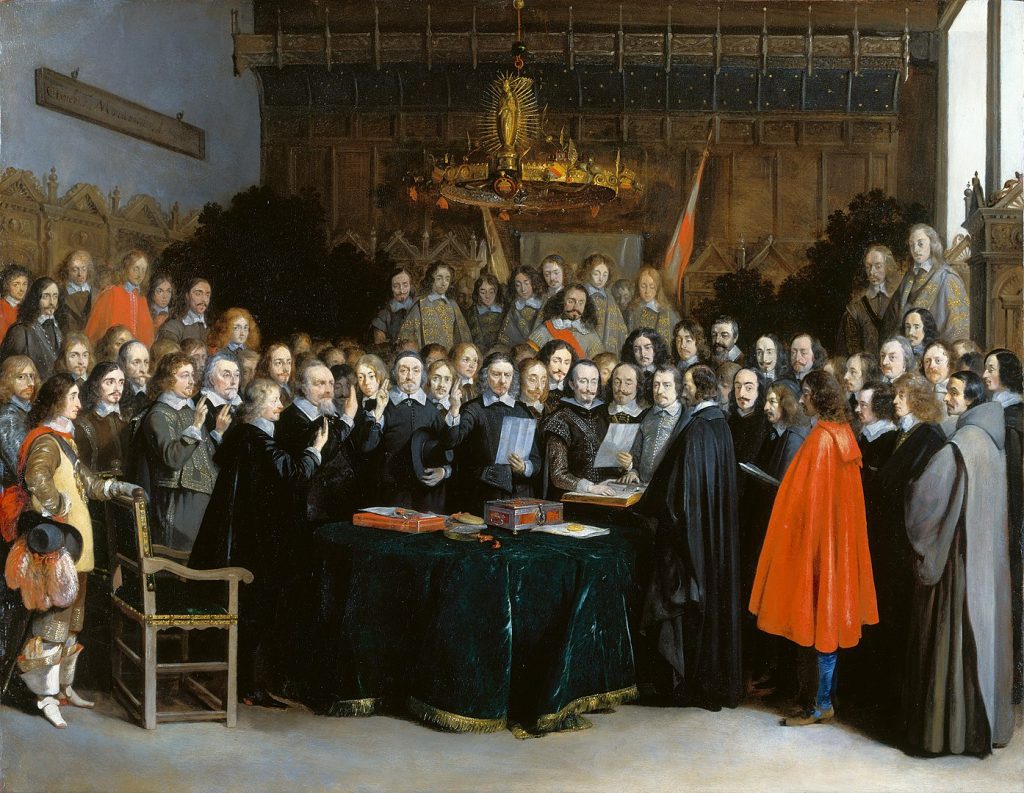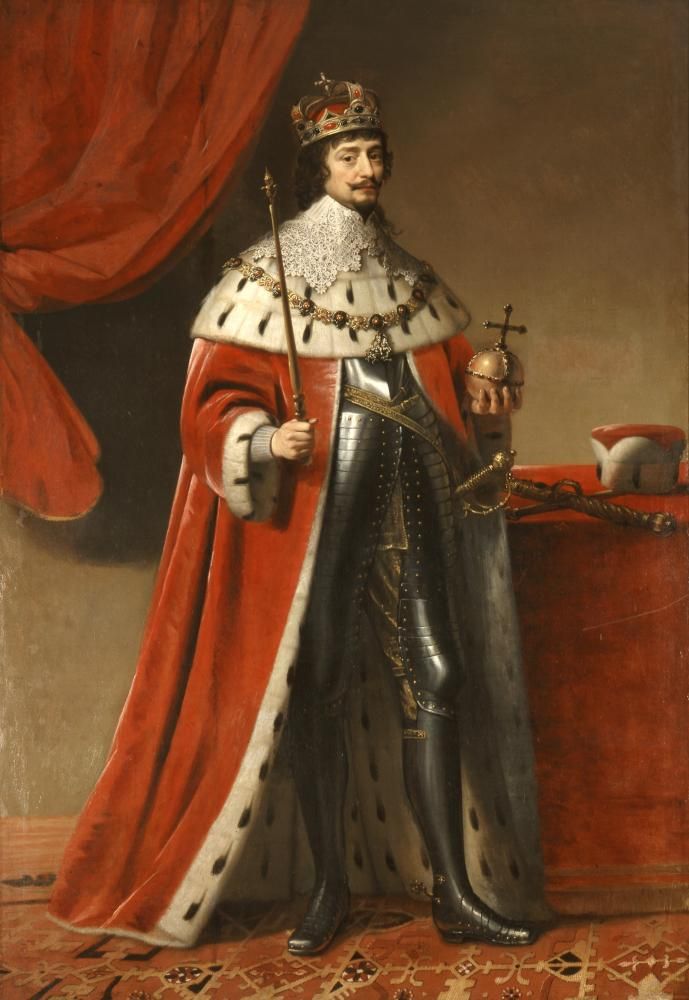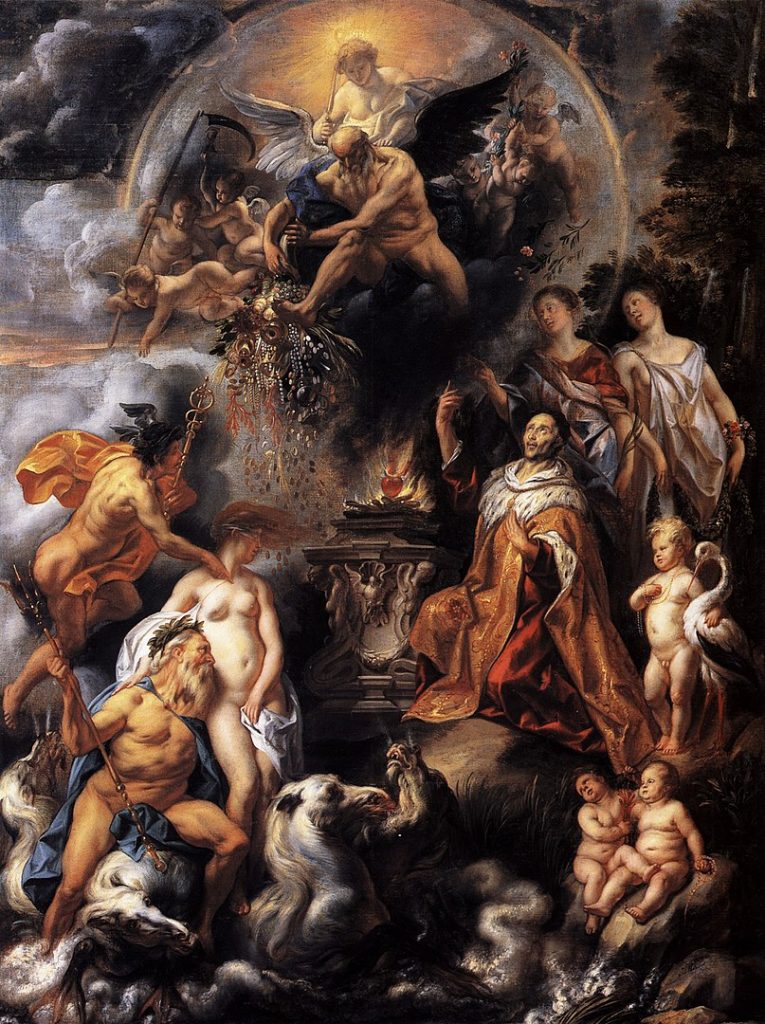This Week in History recalls memorable and decisive events and personalities of the past.
24th October 1648 – The Peace of Westphalia is signed, marking the end of the Thirty Years’ War and the Eighty Years’ War

The Thirty Years’ War is one of the most significant conflicts in European and perhaps world history in that it helped define the geopolitical balance of Europe, developed new methods of warfare and began the process by which Europe would move towards freedom of religion.
The Thirty Years’ War is a conflict too complex and convoluted to explain fully in detail here, but the following is a brief summary.
In 1618 a group of Bohemian (Czech) Protestants began a revolt against their Austrian Hapsburg rulers over fears that the Catholic Hapsburgs (based in Austria) would ignore the promises of religious toleration granted to the Bohemians in 1609, and aggressively enforce Catholic orthodoxy as soon as they were in a position to do so. The newly elected Hapsburg emperor had prior to his elevation aggressively destroyed the Protestant movement in southern Austria.
In an attempt to frighten the rebels and get them to stand down, the Hapsburgs sent emissaries to the rebels with a letter threatening them all with execution if they did not submit. The Protestants threw these men out of a window in the castle of Prague in an event known as the Third Defenestration of Prague.
After this, the Bohemian Protestants declared their support for Frederick V, the (Protestant) Elector of the Palatinate, a collection of feudal lands scattered across central and western Germany, as the new king of Bohemia.

This kicked off the Thirty Years’ War, with the Austrians sending troops to put down the revolt and defeat the armies of the Palatinate, which in turn sent reinforcements to aid the Bohemian rebels.
Over the next 30 years a horrific and brutal war raged across Central Europe, drawing more and more nations into the conflict. As soon as any side was close to winning, another country would join the losing side and continue the war. The conflict soon became merged with a much older war, the Eighty Years’ War, which was a conflict between the Protestant provinces of the Netherlands and the Catholic Spanish branch of the Hapsburg family, which had previously ruled the territories that are today Luxembourg, Belgium and the Netherlands. Although the Spanish had recognised the Dutch Protestant state in 1609, the conflict was reignited by the Thirty Years’ War, as both the Dutch and Spanish became involved.
By the end of the war, the conflict had involved the Hapsburg territories of Austria, Hungary and Croatia, the Spanish Empire, Bavaria and an alliance of German princes (called the Catholic League) against the Bohemian Protestants, Savoy, Sweden, the Palatinate, Denmark, the Dutch Republic, Transylvania, Denmark, Prussia, Saxony, France and an alliance of Protestant Germans.
The conflict involved large armies of mercenaries who were employed by both sides and often treated the civilian population with incredible cruelty, looting, raping, murdering and burning wherever they went.

This was largely because the nations involved did not have significant logistical systems to support their mercenary armies, which were forced to live off the land, thus taking what they needed to survive and extracting their pay from the people they encountered while on campaign.
Modern estimates suggest that around seven million people died in the war, mostly from famine and plague spread or worsened by the conflict. The population of Central Europe would not reach its pre-war level until the year 1750.

As a result of the massive scale of the hostilities, by 1648 all sides were completely exhausted. What had started off as a regional revolt to protect religious rights had morphed into a massive power struggle between France, Sweden, the Dutch, Spain and Austria. Having reached a stalemate of sorts, the major powers on each side began negotiations in 1648 in the neighbouring cities of Münster and Osnabrück in the region of Westphalia, both sides wanting to meet in territory they controlled.
A series of treaties over the course of 1648 culminated in the signing of the main treaty on 24 October 1648.
The chief provisions of the treaties were that:

• All nations involved would recognise the Peace of Augsburg of 1555, in which each ruler had the right to determine the religion of their state. However, unlike in the Peace of Augsburg, subjects were no longer forced to follow the conversion of their ruler. Rulers were allowed to choose Catholicism, Lutheranism, or Calvinism as the religion of their state. This provision only applied to the states of the Holy Roman Empire;
• Switzerland’s independence from the Holy Roman Empire would be formally recognised;
• The Dutch Republic’s independence from Spain would be recognised;
• Various territorial adjustments would be made, with land being given to Prussia, France and Sweden; and
• Catholics and Protestants would be held to be equal before the law.
The peace did not end all hostilities, as some of the powers continued to fight for some time yet, but the treaty did bring an end to the great European wars of religion, which had ravaged the continent since the first half of the 16th century.

While the Peace of Westphalia did not establish what we would today recognise as freedom of religion, it was an important step towards the idea that religious conflict was unwinnable and that toleration was the only way to ensure peace within nations.

This idea would grow in power and sophistication to become one of the founding ideals of the liberal movement of later centuries.
If you like what you have just read, support the Daily Friend

